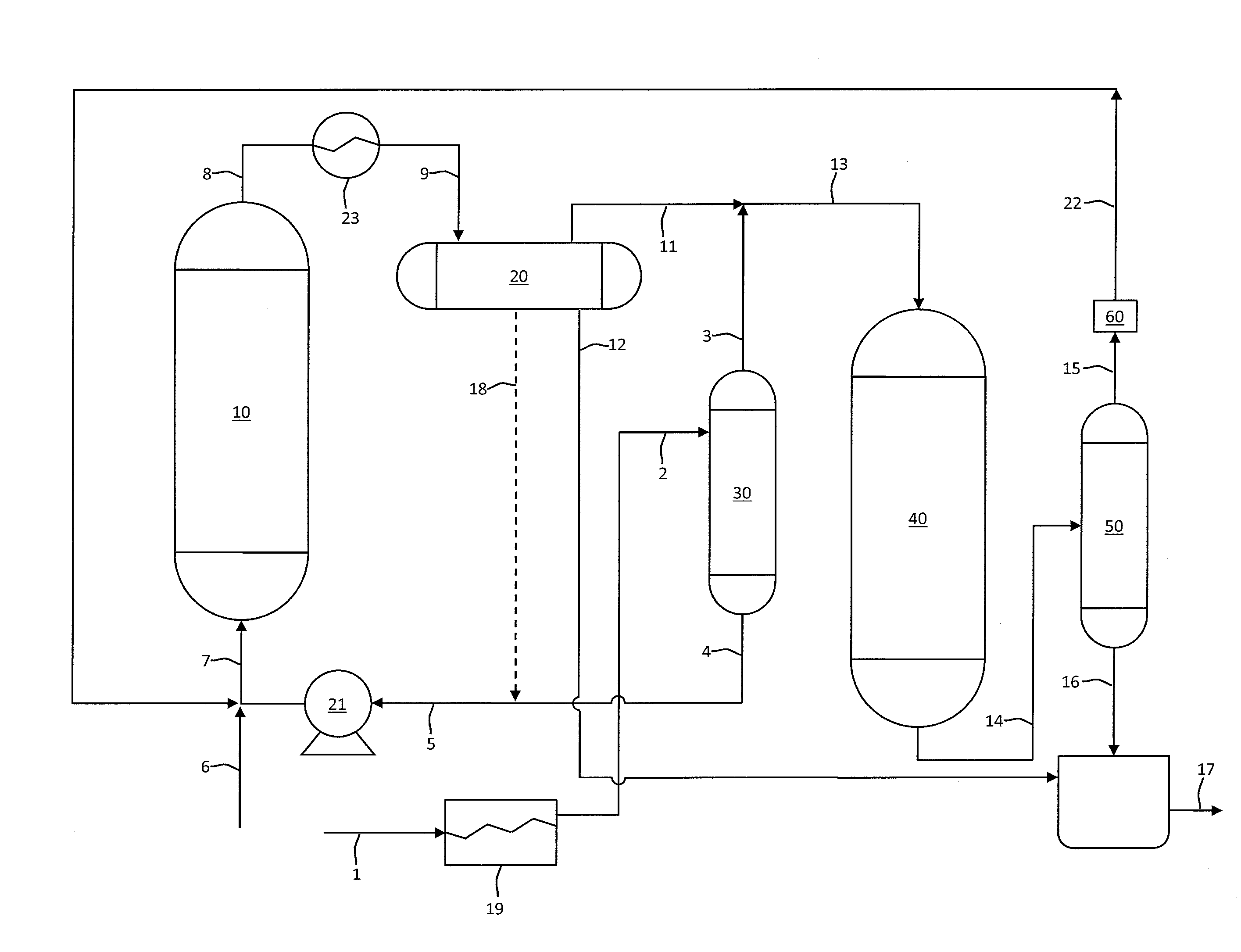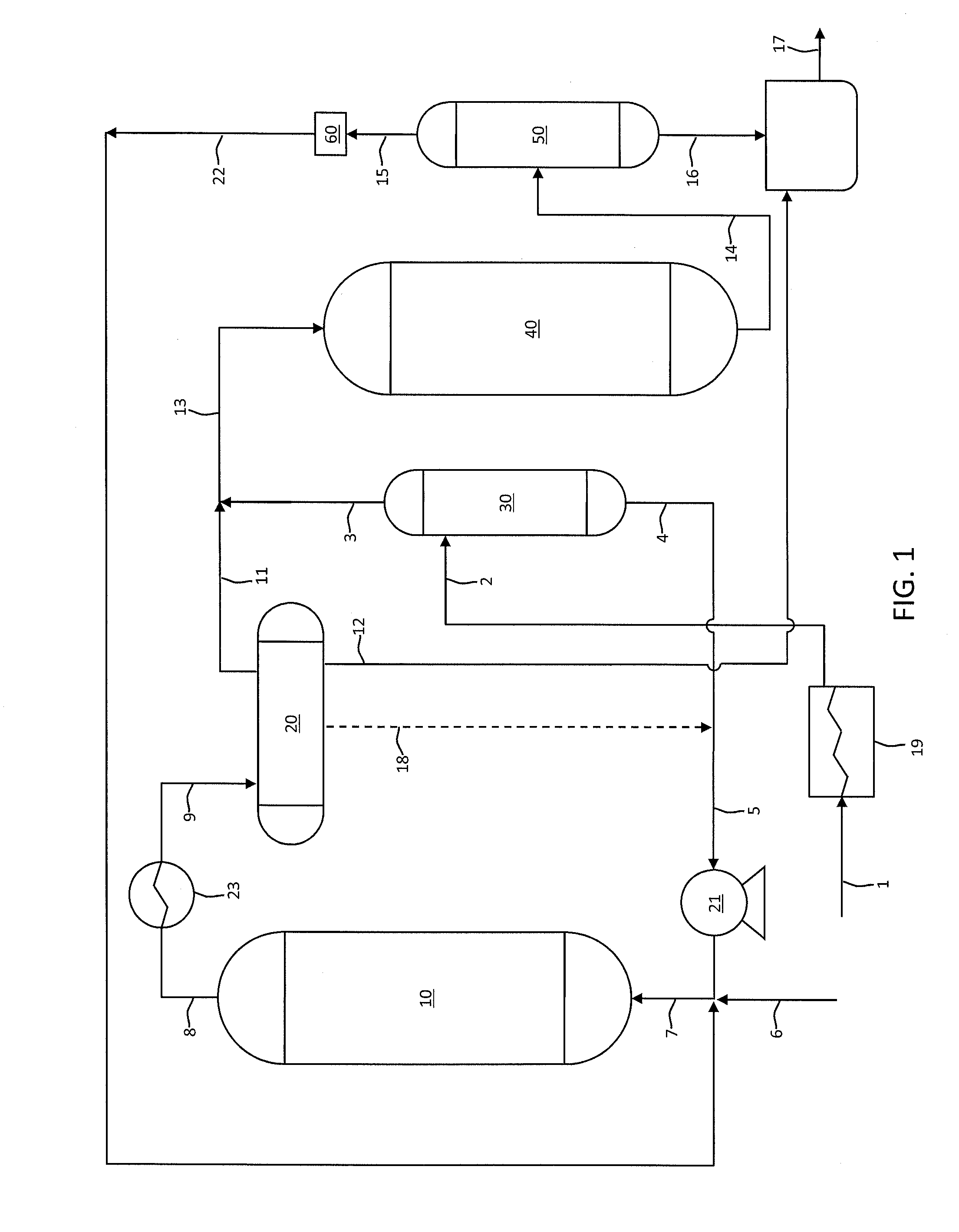Integrated ebullated-bed process for whole crude oil upgrading
a technology of whole crude oil and ebullition bed, which is applied in the direction of hydrocarbon oil cracking, hydrocarbon oil treatment, refining to eliminate heteroatoms, etc., can solve the problems of high capital investment, commercial impracticality, and considerable problems of fixed-bed technology
- Summary
- Abstract
- Description
- Claims
- Application Information
AI Technical Summary
Benefits of technology
Problems solved by technology
Method used
Image
Examples
example
[0038]A sample of 1000 Kg of Arab light crude oil is heated and flashed in an atmospheric flash unit, resulting in a straight run distillates fraction and an atmospheric residue fraction. The properties of the whole crude oil and its fractions are given in Table 1.
TABLE 1Properties of Arab light crude oil and its fractionsWhole Atmospheric FractionCrude OilDistillatesResidueYield Weight %100.057.342.7Yield Volume %100.062.337.7Gravity, °API33.249.415.0Gravity, Specific 60 / 60° F. 0.8590.7820.966Sulfur, W %1.97320.753.21
[0039]The atmospheric residue fraction is mixed with hydrogen and sent to an ebullated-bed reactor operating at 440° C., 160 bars of hydrogen partial pressure, liquid hourly space velocity of 0.2 h−1, catalyst replacement rate of 0.86 Kg catalyst / m3 of oil. The ebullated-bed reactor has an external recycle vessel, from which the unconverted oil is recycled back to the reactor at a recycle to feed ratio of 6.
[0040]The straight run distillates fraction from the flash ves...
PUM
 Login to View More
Login to View More Abstract
Description
Claims
Application Information
 Login to View More
Login to View More - R&D
- Intellectual Property
- Life Sciences
- Materials
- Tech Scout
- Unparalleled Data Quality
- Higher Quality Content
- 60% Fewer Hallucinations
Browse by: Latest US Patents, China's latest patents, Technical Efficacy Thesaurus, Application Domain, Technology Topic, Popular Technical Reports.
© 2025 PatSnap. All rights reserved.Legal|Privacy policy|Modern Slavery Act Transparency Statement|Sitemap|About US| Contact US: help@patsnap.com


